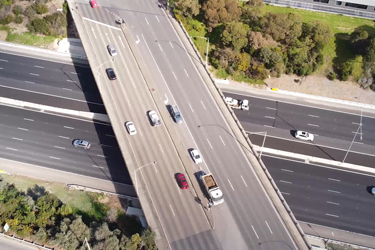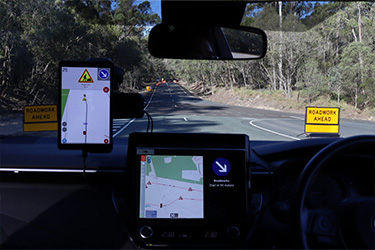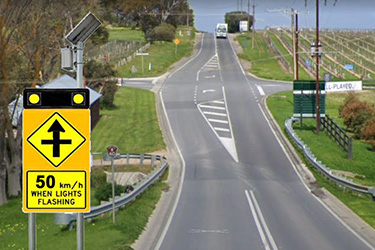Exploring opportunities for improved mobility post-COVID-19
SAGE Automation, Published: May 25, 2020 - Updated: June 8, 2021 (7 min read)
Over the last few months, around the world there have been huge changes to the way we move and operate due to the COVID-19 pandemic. We’ve seen people really adapt during this time, and in doing so, many industries are taking stock of this time and what we’ve learned from it.
From a transport perspective, we’ve definitely seen a change to the way we move, as restrictions have seen more time spent in our local neighbourhoods. While some parts of the world are beginning to reopen, this has provided an opportunity to examine how transport can be improved and made safer.
SAGE Automation’s General Manager of Transport, Damian Hewitt, recently joined Bounce Lab for a chat about mobility and economic recovery during a time of disruption.
Bounce Lab is a transport think tank, a Smart Cities Council Australia New Zealand initiative to help reimagine the way forward, and to drive recovery through shared knowledge. We shared some of the key insights from this discussion between Damian and Smart Cities Council’s Adam Beck below.
Smart mobility leads to more comfortable cities
As cities are dealing with increasing populations, the focus on future public transport is multimodal. That means smart transport networks must rely on intelligence to meet the challenge of increasing access to services while trying to reduce individual cars as much as possible.
To do this, cities like Singapore have introduced autonomous shuttles and shared electric vehicles to improve urban mobility and help users complete their journey. While this approach currently works for smaller distances, there are other ways of connecting users with transport services when longer distances are a factor. And some of these solutions can be quickly embedded into existing networks.
Adam Beck: What if Matilda was up and running prior to COVID-19 and how would our public transport system have changed?
Damian Hewitt: So Matilda is an intelligent transit hub. We recognised within the industry that we needed to have connected solutions for our mobility. [The hub] started to evolve with our role in autonomous vehicle transport, particularly around the smaller shuttles. As we evolved and looked at where this transport needed to commence, we saw a need in the market for accessibility for disability and aged care groups.
Part of the technologies that we were looking to trial and demonstrate in Matilda was technologies that would support everyone and connect all of our solutions that we’re rolling out in the transport network. We wanted Matilda to be very versatile and flexible, so Matilda was based on a shipping container footprint that makes it portable. Particularly with metro projects around the country, the importance is to be able to maintain service and to communicate to users of the public transport network to know where the stops were moving to around construction zones, for example.
Creating connected transport systems improves the efficiency of public transport while significantly improving the experience for users. Being able to plan an efficient route with multiple methods of transport relies on integration of these services.
That’s where connected solutions like Matilda, SAGE’s intelligent transit hub can come in. By communicating in real-time with users, they have visibility into the next available transport options and any delays or changes to the services. For users of public transport who need a bit more support, Matilda also communicates directly through sign language (AUSLAN) or it can talk to people who are blind or vision impaired to tell them which seats are free.
What outcomes should we expect to see in transport in the future?
As we integrate communicative data technology into our transport systems, we’re already seeing the potential to increase independence for aged care and disability groups, and to improve the transport experience for all users.
Adam Beck: I’m hearing that everyone is loving the level of walking and cycling going on, I’m hearing that people are worried about using public transit, and we’ve got small businesses that need help. For me, trying to reimagine what public transport looks like in a suburban centre with […] the mashup of local data and information, pushing it out and promoting walking and cycling while having safe and healthy transit as well. I wonder what the post-COVID opportunities are for a rethink on these micro-hub, intelligent places or spaces could be?
Damian Hewitt: I think the opportunity here is to think about how are we going to transition back to normal transit and transport? I think, obviously with mass transport there are complications of ‘how do we ensure that the person next to us is well?’ I think the opportunity is for us to have a stronger connected solution, and from the regional type shopping complexes to local community, the opportunity now is to have that connected.
The type of data sets that we do have in being able to run algorithms for where people are moving, where they’re going to move ahead of time, the systems that are out there can help us know exactly where someone’s going to move before they even move there. That allows for our transport to actually do predictive movements on where our systems should be and create a lot of efficiencies.
The other thing is we need to be really careful in how we do move forward, what we don’t want to do is leave behind the vulnerable groups, particularly people with disabilities and aged care.
Watch the full Bounce Lab interview with Adam and Damian.
Open data and connectivity is what will drive the future smart cities. As we look to the future, we’re presented with an opportunity to apply smart technologies in our networks, predicting movement trends and creating efficiencies.
Smart transport offers huge benefits:
- Increased efficiency and accessibility of public transport
- Reduced pollution through increased uptake of public transport
- Increased safety and security through monitoring
- Smart parking, thanks to sensors and shared data.
As we’ve seen during the COVID-19 pandemic, effective public transport is needed to keep our cities running, particularly in ensuring essential workers are able to continue to commute. While car traffic has reduced during this time, we need to find a way to safely support public transport users as markets begin to reopen. This is an opportunity to reduce congestion and to allow people to walk or cycle more, as they have been doing in Australia’s major cities, while keeping them connected through centralised transport systems.
“The answer is in the technologies and how we connect. I think that if we can connect and get information into centralised systems, like a Matilda, that can create a solution that then can bring all of the solutions from that community together, and that’s the opportunity that can really make a difference.”
Transport networks can harness the latest communication networks and technologies to integrate smart features, and to close gaps within user journeys.
Improving mobility for our cities is reliant on the experience of users, and optimising the current network with connected solutions provides huge benefits.
SAGE Automation has been involved in a number of smart city projects, supporting the industry in getting the best outcomes for the community. In addition to providing connected solutions, we provide advisory and design services to improve transport for the community.
For more information about our experience in the smart cities industry, view our recent work for the City of Unley.









